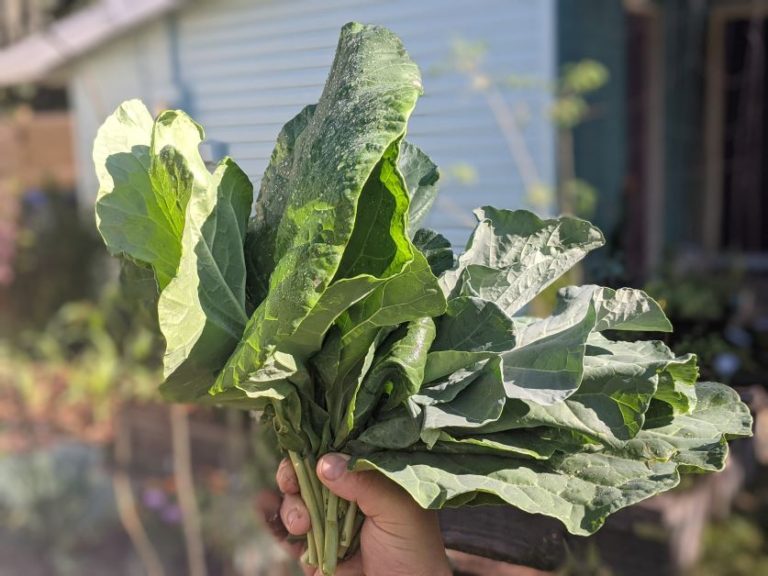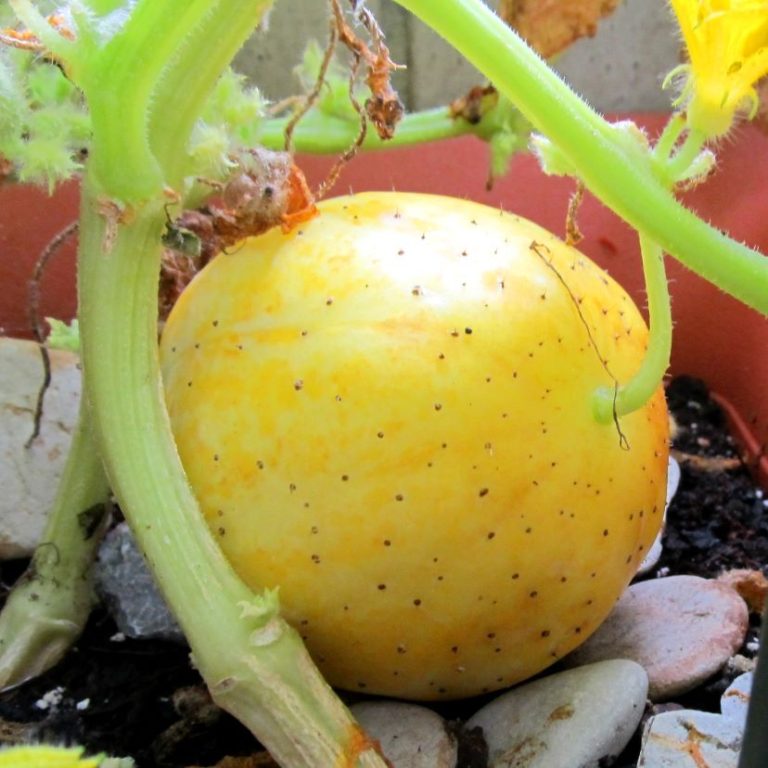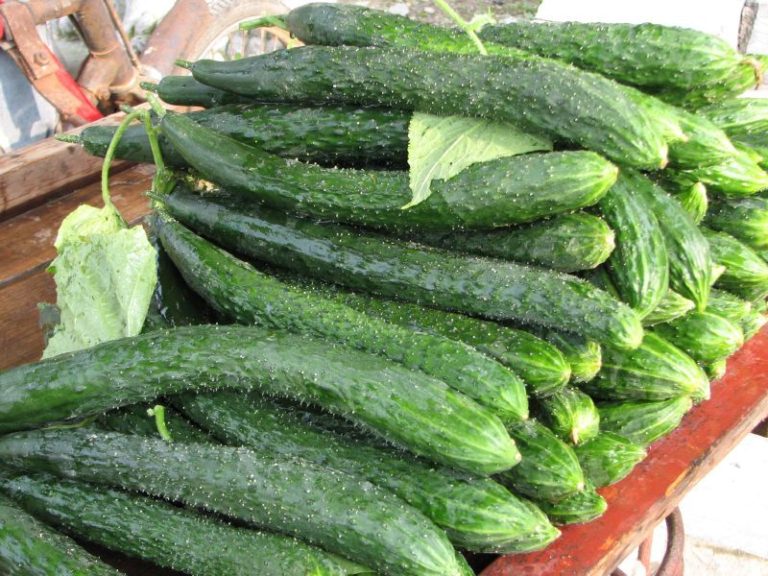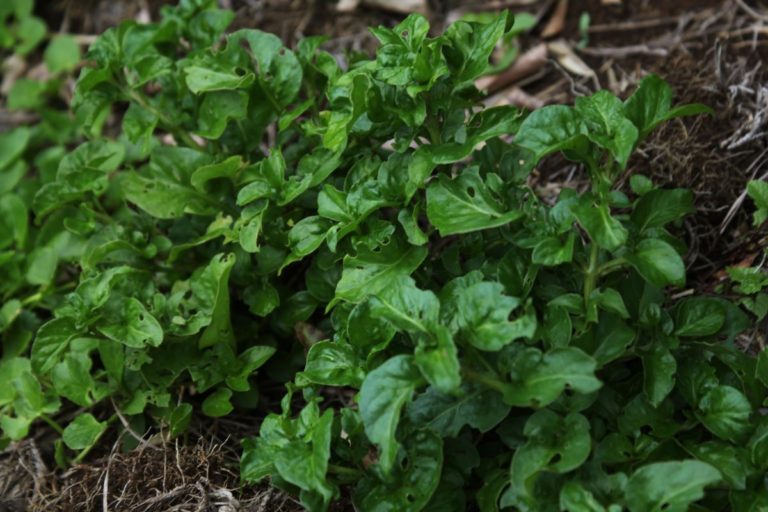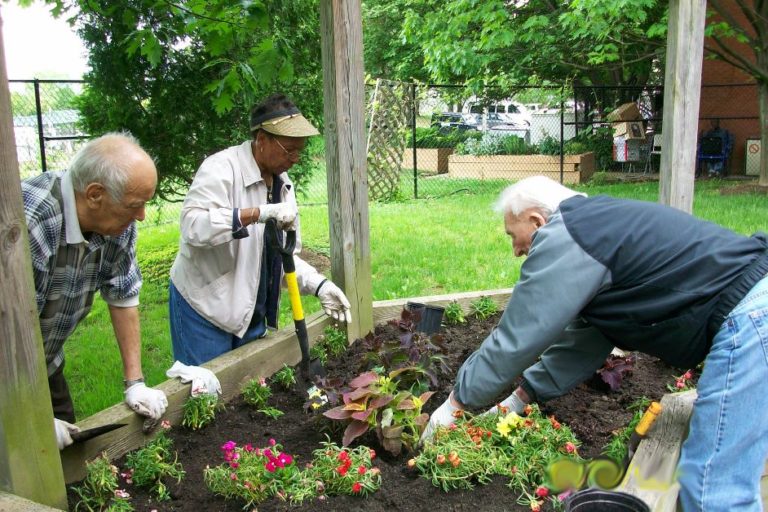Best Beans to Grow in Florida
Although many people have no problems growing green beans in Florida, I’ve never had good luck with them. I can get one or two small harvests but then the plant succumbs to some sort of pest or disease shortly after. I got fed up with my bean blundering and looked to other parts of the world to see what kind of beans they grow. Maybe beans that grow in hot, tropical places like Asia or Africa will do better in Florida than common green beans? My hunch was right, and I’ve found the best beans to grow in Florida.
These exotic varieties are built to withstand heat, humidity, and heavy pest pressure – all things we have in abundance in Florida. Give these beans a try this season and I have a feeling that you’ll pass on regular old green beans next year.
Best Florida Pole Beans
Yardlong Beans
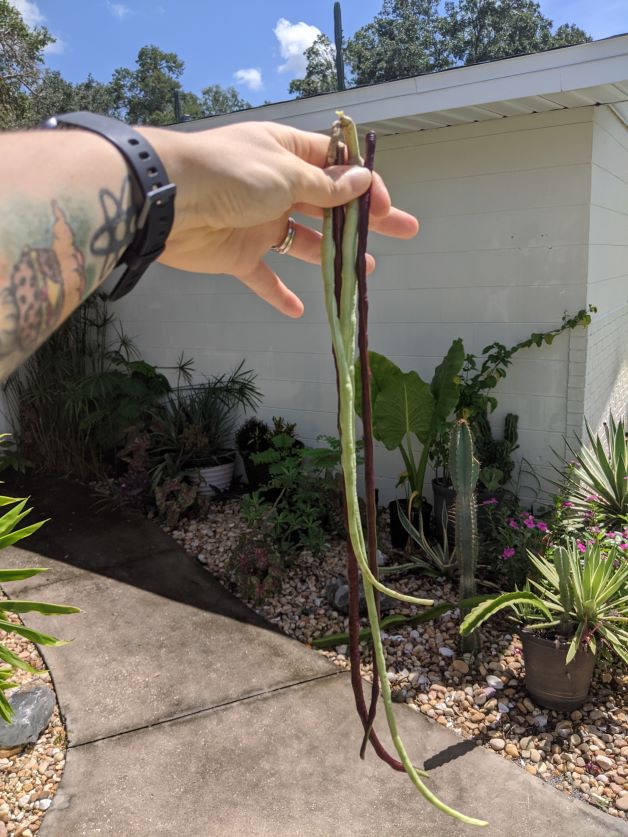
Also known as the snake bean, asparagus bean, noodles beans, and Chinese long bean, yardlong beans are a type of cowpea native to Southeast Asia and China. The most striking thing about the yardlong bean is its length. Although they’re called yardlong beans, they usually grow to be half a yard long (1.5 feet).
Yardlong beans are delicious and taste a little like a cross between a traditional green bean and asparagus. Yardlong beans come in red and green varieties, but both taste the same. At 80 days, yardlong beans take longer than some other beans to go from seed to harvest. Once they get going, though, they’re very generous and the more you harvest, the more you’ll get.
Qing Bian Romano
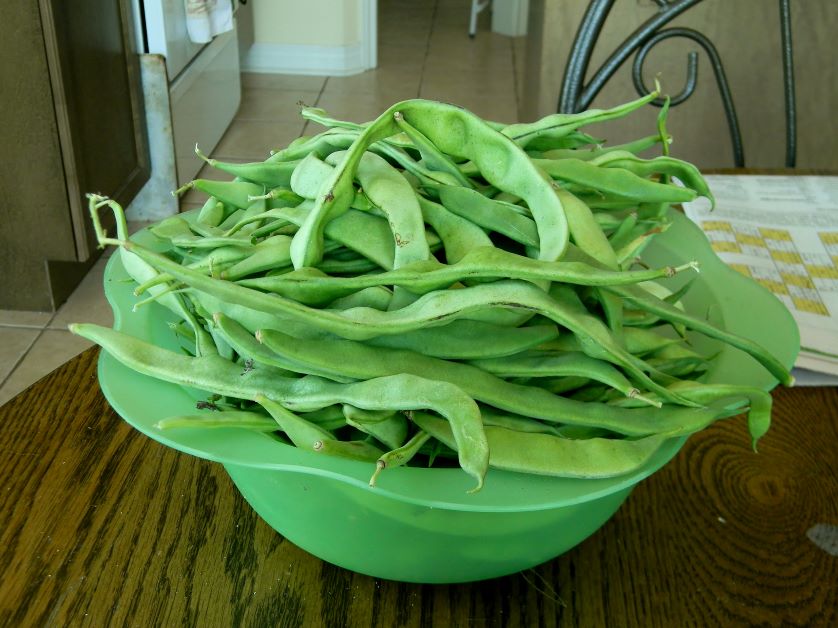
Qing Bian Romano is an heirloom variety that dates back to the 1800s. This pole bean is also called the flat bean, Italian Roma bean, and broad bean. Qing Bian is flat, scalloped on the sides, and can grow to 12 inches long. Qing Bian Romano is one of the best bean varieties for Florida gardeners because they’re resistant to many pests and diseases. They also only take 55 days to go from seed to harvest.
As far as flavor is concerned, Qing Bian Romano beans are tasty, tender, and stringless. This is also a good bean for freezing and canning.
Rattlesnake Beans
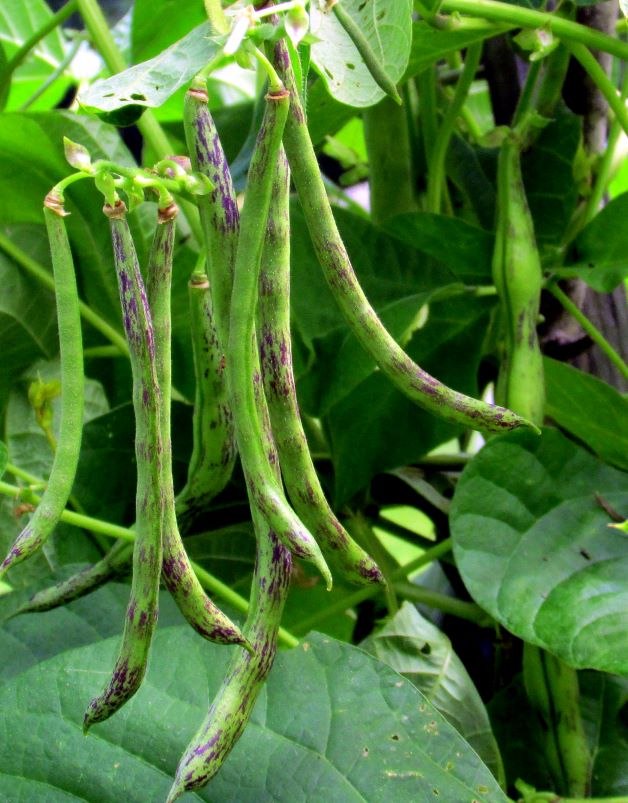
Rattlesnake beans are best known for their pretty coloration. These beans are mostly green but are marbled with streaks of purple. Out of all the pole beans on this list, the rattlesnake bean is the smallest. Even so, this variety can still get to be 10 inches long. This best Florida bean variety is drought-tolerant and can handle high humidity. It takes 65 days to harvest.
You can eat rattlesnake beans whole or shelled. When eaten young, these beans taste a lot like snap peas – crunchy and a little sweet. If you let the pod mature, you can shell them. Shelled rattlesnake beans will remind you of white pinto beans – meaty and filling.
Best Florida Dry Beans
Pigeon Peas
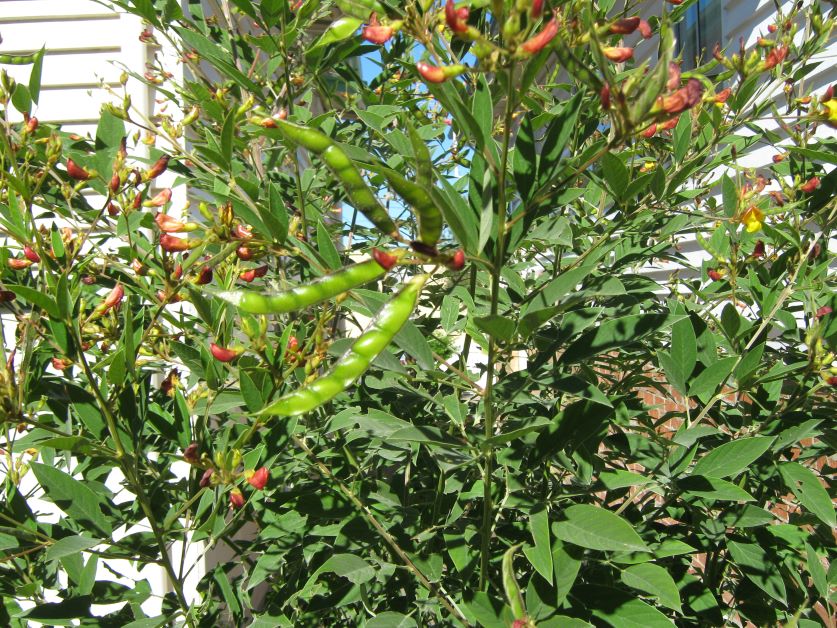
Pigeon peas might be the easiest bean to grow in Florida. This is an Indian native that’s also popular in Africa and the Caribbean. Unlike the other beans on this list, pigeon peas grow as a shrubby tree instead of as a vine or bush. It can take 6 months to get your first pigeon pea harvest but once the plant is established, it’ll give you generous harvests season after season. In fact, the average pigeon pea lifespan is about 5 years.
Pigeon peas have a nutty flavor and some say they’re a little like edamame. Pigeon pea leaves are also edible, but not super tasty. Most people cook pigeon peas and mix them with rice, or use them in soups or stews.
Kebarika
Kebarika is a bush variety that produces beautiful dark purple beans that are streaked with white. As a Kenyan native, Kebarika thrives in high heat and dry conditions. Each seed pod grows to be about 6 inches long and averages 6 beans per pod. Kebarika plants are about 2 feet tall and while it’s a bush bean, it does like to climb a little. For best results, plant it next to a trellis or DIY garden fence. This variety takes 80 to 90 days to mature and tastes a lot like kidney beans.
Southern Peas
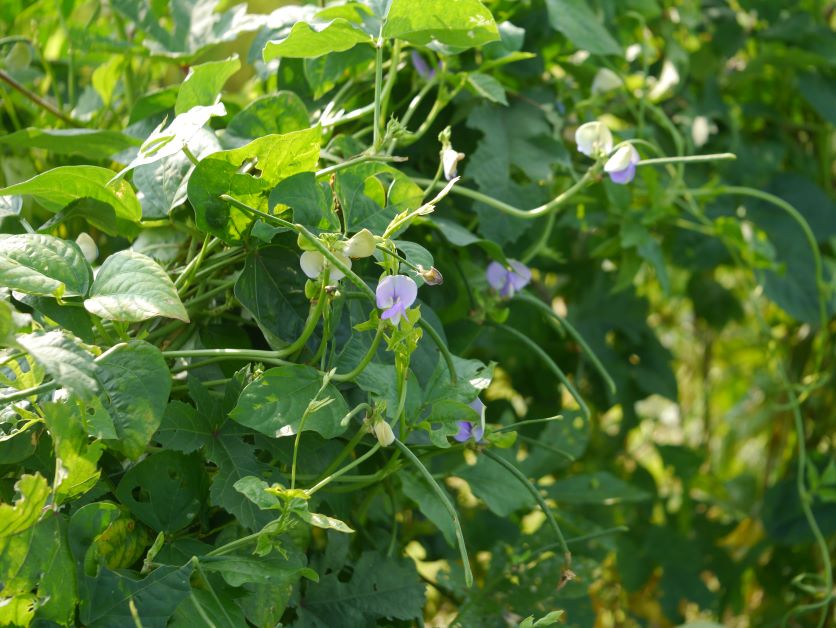
Southern peas are a staple in the Southeastern U.S. There are 3 types of southern peas: crowder, cream, and black-eyed. Black-eyed peas are probably the most popular and are known to bring good luck if you eat them on New Year’s Day.
Southern peas are drought and heat tolerant. It can take 60-100 days for southern peas to go from seed to harvest and the hotter it is, the shorter the maturation time. Southern pea leaves are also edible. Prepare them like you would spinach and sauté them quickly in a hot pan. You can also eat young, tender leaves as a salad green.
Tepary Beans
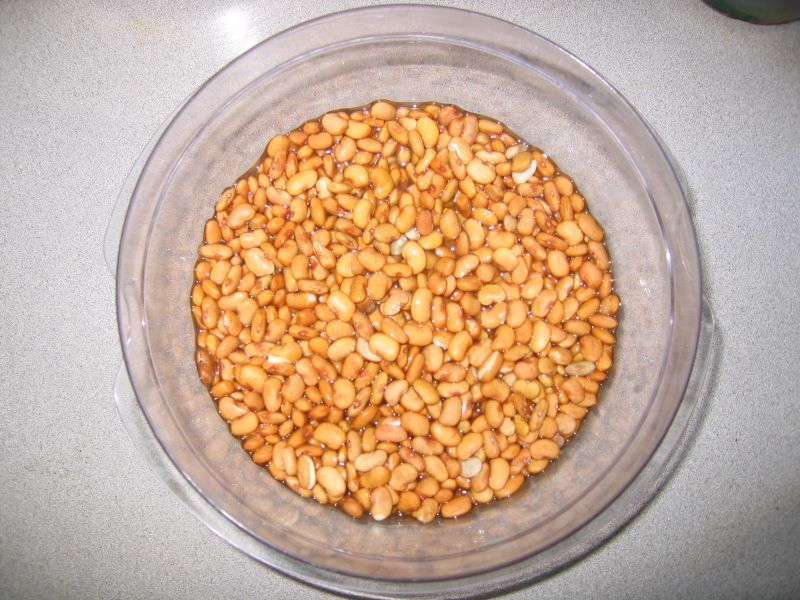
Originating from the American southwest, Native Americans have eaten tepary beans for thousands of years. Tepary beans are native to the Sonoran desert, so it’s very tolerant to drought and high heat. They also love sandy soil which makes them a great addition to the Florida garden.
Some people hail the tepary bean as a superfood because they’re extra high in fiber and protein. Tepary beans stay whole when cooked and aren’t as creamy as the pinto bean. They’re described as having a mild and nutty but slightly sweet flavor. They’re usually used in soups and stews, but you can also boil and sauté them with onions, garlic, and spices.
Once you choose what beans you want to grow, learn how to grow beans in Florida with our comprehensive growing guide.

